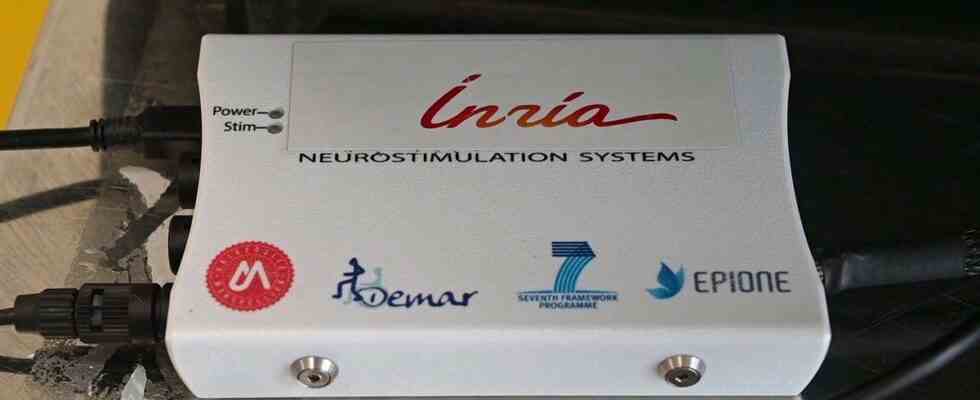With his left hand, Jerome grabs a can of soda and brings it to his mouth. Then, with a fork, he pricks small potatoes, and pretends to swallow them. Rather mundane scenes, for most of us. But for this young man, quadriplegic since an accident, these simple gestures are real feats. Jérôme is one of the patients to have regained, during this scientific experiment, the use of his limbs, thanks to a project called Agilis.
This world first is supported by the National Institute for Research in Digital Sciences and Technologies (Inria), the Saint-Jean clinic in Montpellier (Hérault), the Bouffard-Vercelli functional rehabilitation center in Perpignan (Pyrénées-Orientales) and the Hérault start-up Neurinnovwhose know-how is at the heart of the project.
“It’s quite moving”
Electrodes were wound around the median and radial nerves in the arms of two volunteers with spinal cord injury during surgery. These small electrical conductors are connected to an external stimulator, which is itself connected to other muscles that the patients have the possibility of contracting, thanks to small sensors. Especially on the shoulder and around the neck for Jérôme. Thus, during the tests, by making small movements with other parts of their bodies, the two men were able to grab objects and lift them. Revolutionary.
“I didn’t expect there to be so many new things so quickly,” says Vincent, the other patient who took part in the project, in a video shot during the experiment, by the teams of the Inria. “To catch an object so quickly, so strongly… And every day, better and better… It’s something quite moving. After a test of approximately four weeks, the implants were removed, in both patients. “It doesn’t matter,” confides Jérôme. For a month, I will have had mobility restored to my hand. They will take it away from me. But I would have participated in the research. »
“The promise of a solution […] reliable and viable »
This project is, for Dr. Charles Fattal, head physician at the functional rehabilitation center of Perpignan, the “promise of a reliable and viable technological and functional solution, to any quadriplegic person who could not access surgery classical function dominated by musculotendinous transfers”.
However, the various teams that have worked to make this dream a reality are not yet at the end of the road. They will continue, in the coming years, to improve this process, which was the subject of a publication in the scientific journal Nature. And, perhaps, one day, quadriplegic people will truly be able to regain the use of their hands, thanks to these revolutionary little electrodes.

